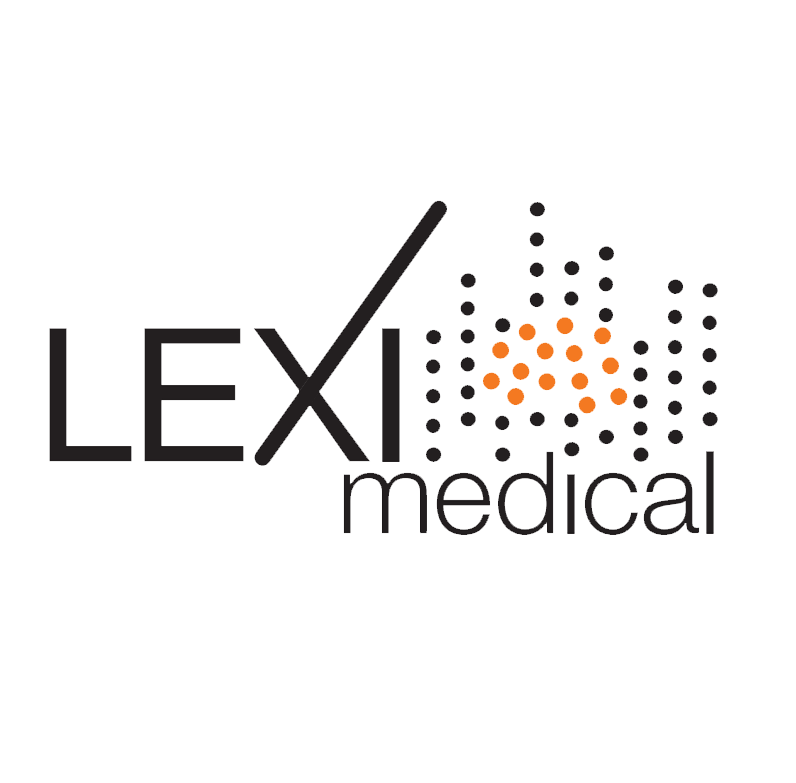Lexi-Medical

Deep brain stimulation of the motor thalamus to improve movement in paralyzed or weak facial muscles, resulting in improved speech, breathing, and swallowing after stroke.
- As many as 50% of stroke survivors suffer from dysarthria, or difficulty speaking due to muscle weakness.
- Dysarthria leads to feelings of isolation, struggles with identity, and reduced participation in social activities.
- Our technology uses deep brain stimulation to electrically stimulate the motor thalamus to augment movement in paralyzed or weak facial muscles, resulting in immediate speech improvement by strengthening these muscles.
- Our solution utilizes existing FDA-approved hardware, creating a simpler path to translation; however, our stimulation target, programming, and indication are novel and differentiate our technology from other deep brain stimulation systems.
- The PInCh award will help us to complete a small clinical pilot study of two patients with dysarthria after stroke.
Over 9 million adults in the US have suffered a stroke during their lifetime. 26-52% of stroke survivors are left with dysarthria, a condition characterized by difficulty speaking stemming from paralyzed or weak facial muscles. While some patients with dysarthria experience recovery within a few months of stroke, 40% of cases remain unresolved. Struggling with communication results in feelings of isolation, identity struggles, and reduced participation in social activities, all of which negatively impact quality of life.
Typical treatment for dysarthria involves speech therapy, where patients learn techniques for improving communication. Most techniques practiced in therapy are compensatory in nature, providing alternatives or work-arounds to traditional communication, rather than addressing the speech directly. For compensatory strategies to be effective, patients need to practice and apply them consistently, which highlights a key limitation of speech therapy.
Several augmentative and alternative communication devices also exist, including text-to-speech synthesizers, alphabet boards, and voice amplifiers. Similar to therapy, long-term success with these devices is dependent on several factors like the patient’s support network, proficiency with technology, and motivation. Even when used consistently, these devices do not restore natural speech, can be cumbersome to transport, and have functional limitations.
Currently, there are no options for restoring natural speech for stroke survivors suffering from chronic moderate to severe dysarthria.
Our technology uses deep brain stimulation (DBS) to electrically stimulate the motor thalamus, a deep brain structure, to augment movement in paralyzed or weak facial muscles, resulting in improved speech after stroke. The DBS system includes bilateral, multi-contact electrode leads and an implantable pulse generator, which are both already deemed safe by FDA approval; however, our stimulation target, programming, and indication are novel and differentiate us from medical device companies selling these systems for other indications.
At this time, we have completed a preclinical study to validate our proposed mechanisms and leveraged existing hardware to test our concept in two patients with severe dysarthria from traumatic brain injuries which allowed the patients to generate more fluent, cadent, and regular speech and sustain longer breaths.
With speech therapy alone, patients with moderate or severe dysarthria may see mild improvements using compensatory strategies but still suffer from impaired speech as oral-motor exercises used in therapy are typically unable to rebuild muscle tone or increase control over weak or paralyzed muscles. Our technology, however, improves speech immediately by giving patients increased control over their facial muscles. Therefore, we believe that DBS of the motor thalamus combined with speech therapy would provide the greatest speech improvements for patients with dysarthria.
- Elvira Pirondini, PhD: Assistant Professor, Physical Medicine and Rehabilitation, University of Pittsburgh
- Jorge Gonzalez-Martinez, MD, PhD: Professor, Neurological Surgery, University of Pittsburgh
- Julie Fiez, PhD: Professor, Psychology, University of Pittsburgh
- Jordyn Ting: PhD Candidate, Bioengineering, University of Pittsburgh
- Isabella Montanaro: Master’s Student, Bioengineering, University of Pittsburgh
We plan to utilize PInCh funding to complete testing in two patients with post-stroke dysarthria to further validate our technology. We will utilize this data to complete an application for an FDA Investigational Device Exemption (IDE) for the fully implanted stimulator system. We plan to incorporate Lexi Medical, take an option on the patent, and leverage the preliminary data obtained in these two patients for an NIH SBIR/STTR grant submission. We will use SBIR/STTR funds to complete an early feasibility study of ten patients with fully implanted stimulators to further demonstrate the safety and efficacy of DBS to improve dysarthria and to support an application for FDA Breakthrough Device Designation.
Further in the future, we will partner with key DBS medical centers and complete a pivotal trial of 200 patients to demonstrate that DBS paired with speech therapy produces better outcomes than speech therapy alone. Once these steps are completed, to guarantee that our technology impacts the greatest number of patients, we will look to be acquired by a large medical device company, such as Abbott, Boston Scientific, or Medtronic.
- Is Deep Brain Stimulation (DBS) safe? Yes, DBS implants are already performed at around 250 medical centers in the US by trained neurosurgeons.
- If DBS is FDA-approved, how is our solution novel? DBS has never been investigated for use in improving speech deficits and is not yet approved for any indications relating to paralysis.
- Why would patients choose to get brain surgery to help their speech? People with moderate to severe dysarthria have very limited options to improve their communication, and these options generally cannot improve their natural speech patterns.
- Does this procedure replace speech therapy? While some patients may be satisfied with the immediate improvement from DBS, it can be supplemented with speech therapy for additional rehabilitation.